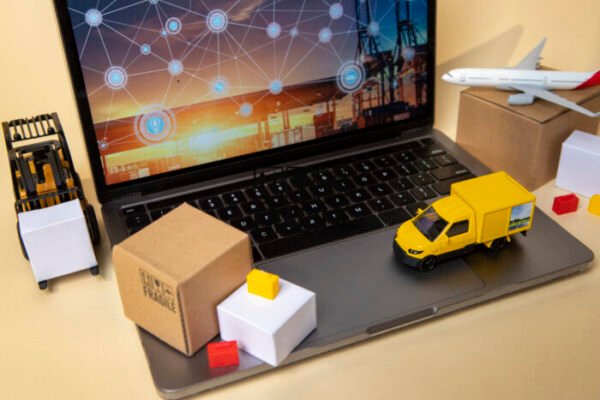Future Trends and Cost of Building a Logistics Software Solution
The logistics industry has undergone rapid digital transformation in recent years, driven by technological advancements, shifting customer expectations, and the need for operational efficiency. Custom logistics software solutions are becoming increasingly vital for businesses to streamline processes, reduce costs, and enhance supply chain management. This article explores future trends shaping the logistics industry and the cost factors involved in developing a Transportation software solution.
Future Trends in Logistics Software Solutions
1. Artificial Intelligence and Machine Learning
AI and ML are revolutionizing logistics by optimizing routes, improving demand forecasting, and automating decision-making. AI-driven analytics help businesses predict delays, optimize warehouse management, and enhance customer service with chatbots. Machine learning algorithms can analyze vast amounts of logistics data to recommend cost-effective transportation methods and detect anomalies that may lead to disruptions.
2. Internet of Things (IoT) and Smart Tracking
IoT devices are enhancing supply chain visibility through real-time tracking of shipments. GPS trackers, RFID tags, and smart sensors allow businesses to monitor temperature-sensitive goods, ensure compliance with regulations, and provide customers with accurate delivery updates. The integration of IoT with logistics software enables better inventory management and proactive issue resolution.
3. Blockchain for Enhanced Transparency
Blockchain technology is emerging as a game-changer for supply chain transparency and security. It provides an immutable record of transactions, reducing fraud and discrepancies in shipping records. Smart contracts in blockchain-based logistics software help automate payments, track shipments in real time, and enhance trust between stakeholders.
4. Cloud-Based Solutions for Scalability
Cloud computing is playing a pivotal role in logistics by providing scalable and flexible software solutions. Cloud-based logistics management systems allow businesses to access real-time data from anywhere, collaborate with partners, and integrate seamlessly with third-party applications. It also reduces the need for heavy IT infrastructure investments, making it cost-effective.
5. Autonomous Vehicles and Drones
The rise of autonomous vehicles and drone deliveries is reshaping last-mile logistics. Companies like Amazon and UPS are experimenting with drone deliveries to enhance efficiency and reduce delivery times. Autonomous trucks equipped with AI-driven navigation systems are expected to reduce operational costs and improve safety in freight transportation.
6. Robotic Process Automation (RPA)
RPA is being widely adopted in logistics to automate repetitive tasks such as order processing, invoice generation, and inventory tracking. By leveraging RPA, businesses can minimize errors, increase operational efficiency, and free up human resources for more complex decision-making processes.
7. Green Logistics and Sustainability
Sustainability is becoming a critical aspect of logistics operations. Businesses are adopting eco-friendly practices such as electric vehicles, optimized routing for fuel efficiency, and carbon footprint tracking. Logistics software is being designed to incorporate sustainability metrics and compliance tracking for greener supply chains.
Cost of Building a Logistics Software Solution
The cost of developing a logistics software solution depends on various factors, including its complexity, features, development team, and technology stack. Below is a breakdown of the key cost considerations.
1. Types of Logistics Software Solutions
The cost of development varies based on the type of logistics software being built:
- Transportation Management System (TMS): $50,000 – $250,000
- Warehouse Management System (WMS): $75,000 – $300,000
- Freight Management Software: $60,000 – $200,000
- Fleet Management Software: $70,000 – $250,000
- End-to-End Supply Chain Management System: $100,000 – $500,000
2. Development Phases and Costs
- Requirement Analysis and Planning ($5,000 – $20,000)
- Identifying business needs
- Defining the software’s scope and functionalities
- Market research and competitor analysis
- UI/UX Design ($10,000 – $50,000)
- Creating user-friendly interfaces
- Wireframing and prototyping
- Ensuring seamless user experience
- Backend and Frontend Development ($40,000 – $200,000)
- Database architecture
- API development and integrations
- Frontend development for web and mobile apps
- Integration with Third-Party Services ($10,000 – $50,000)
- GPS tracking systems
- Payment gateways
- ERP and CRM systems
- Testing and Quality Assurance ($15,000 – $50,000)
- Performance testing
- Security testing
- User acceptance testing
- Deployment and Maintenance ($10,000 – $100,000 per year)
- Hosting and cloud services
- Regular updates and bug fixes
- Technical support and customer service
3. Factors Affecting Development Costs
- Software Complexity: More features and integrations lead to higher costs.
- Customization Level: Fully customized solutions are more expensive than off-the-shelf software.
- Development Team: Hiring an in-house team, outsourcing, or working with freelancers impacts cost.
- Technology Stack: The choice of programming languages, frameworks, and hosting solutions affects pricing.
- Regulatory Compliance: Ensuring compliance with industry regulations like GDPR, FDA, and DOT increases development costs.
Conclusion
Investing in custom logistics software development is essential for businesses looking to optimize their supply chain, reduce operational costs, and enhance customer satisfaction. Future trends such as AI, IoT, blockchain, and automation will continue to shape the logistics industry, making software solutions more intelligent and efficient. While the cost of developing a logistics software solution varies based on features and complexity, businesses should focus on building a scalable and future-proof system to stay competitive in the evolving logistics landscape.





